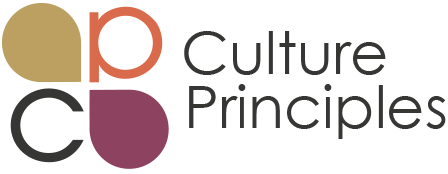
Welcome back, leaders and change-makers. Last week, we explored the all-too-common trap of short-term fixes in the DEI space. We dissected how immediate actions can often serve as mere window dressing, glossing over systemic issues that require a more thoughtful, enduring approach. Today, we pivot towards the future, where DEI is not just an ad hoc initiative but a deeply embedded aspect of organizational DNA. In this second installment of our two-part series, we’ll look at strategies, perspectives, and action plans to make that future a reality.
Channeling a past client whose organization was dedicated to promoting classical music, let’s look at five ways an intentional slowdown may impact how you approach your DEI work. I chose this example because harnessing the sense of urgency without sacrificing sustainability in DEI is like conducting an orchestra. Each instrument—immediate actions, long-term goals, organizational ethos—must be in tune to create lasting change.
1- The DEI Audit: The Drumbeat of Change
Before you direct the orchestra, you must know the instruments you have. Start with a comprehensive internal DEI audit. This captures your organization’s current state and serves as the raw data that will inform your strategic roadmap. Considering what are the explicit and implicit barriers affecting DEI in my organization? How have our previous DEI efforts—or lack thereof—manifested in our current state?
2- Prioritize with Empathy: The Conductor’s Choice
Utilizing the audit data, prioritize issues by categorizing them as “urgent” and “important.” Remember, addressing urgent issues is essential, but it should be done in a way that aligns with your long-term DEI vision. What immediate actions can provide relief while contributing to a long-lasting impact? While exploring how urgent priorities align with our organization’s values and long-term DEI goals.
3- Craft the Plan with Scalability in Mind: Orchestrating Harmony
Build your DEI action plan to scale, ensuring successful initiatives can be expanded or adapted. If a micro-level project, like an inclusion workshop, shows promising results, map out how to weave its lessons into the macro fabric of your organization. Determining what mechanisms can we put in place to ensure our initiatives are easily scalable, and how will the impact of these initiatives be measured and communicated?
4-Leadership Buy-in: The First Chairs in Your Orchestra
It’s critical for senior leaders to step in as early adopters of your DEI initiatives. Their buy-in and advocacy set the tone for the rest of the organizations. Additionally, leaders may only sometimes be ready to take on the heavy lifting immediately. Explore as a team how you might cultivate DEI champions within the leadership team and what resources and training our leaders need to embody these initiatives authentically.
5- Continuous Feedback Loops: The Encore
For your DEI strategy to remain dynamic and relevant, implement continual feedback loops involving multiple stakeholders. The goal is not merely to “check the box” but to engrain DEI into the organizational DNA. To that end, consider the following questions: How do we create a culture of continuous feedback without causing DEI fatigue? What metrics will signal that it’s time to evolve our approach?
While the steps outlined offer a pivotal reframing of traditional approaches, understand that this is not an exhaustive list but an invitation to deconstruct the norm. It’s a call to interweave the threads of urgency and sustainability, thinking and doing, interrogating and reimagining. This is your stage, leaders. Are you ready to orchestrate a performance that defies convention and challenges, elevates, and transforms the core of your organization and the world beyond? Take up the baton; the encore is yours to define.
